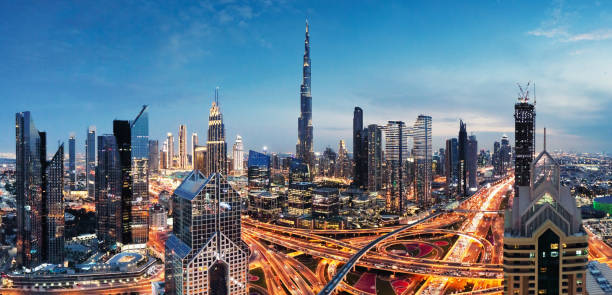
Sheikh Hamdan Unveils Hewi Dubai: A Vision for Revitalizing Community Spaces
Sheikh Hamdan Bin Mohammed Bin Rashid Al Maktoum, Crown Prince of Dubai and Chairman of the Dubai Future Foundation, has unveiled a futuristic urban development project in the form of Hewi Dubai. The visionary project seeks to revive public spaces across Dubai, increasing interaction between people and building relationships between citizens.
The Vision Behind Hewi Dubai
The Hewi Dubai development aims to re-create the lively spirit of historic Emirati fareej, designing contemporary, human-focused spaces that encourage social interaction and a balance lifestyle. Sheikh Hamdan highlighted the significance of community ties, saying, “These are among the core values Emirati families are raised on.”. We need to leave these values to future generations by creating public spaces that unite neighbors, where families can come together, seniors can mingle, and children can make fond memories in a safe and friendly environment.
The Crown Prince imagines these new areas to be more than just parks; they will be exciting extensions of Dubai culture, identity, and aspirations. The project seeks to redefine the meaning of public areas, turning them into part of the city’s neighborhood fabric.
Key Features of Hewi Dubai
One of the star projects of this program is the Hewi Nad Al Sheba 4, which was co-designed with the Dubai Municipality. This community is a case study for the development of public spaces driven by local inputs and informed by huge amounts of data. The design process engages residents in a participatory manner, so that the spaces are infused with local culture and suit the community’s specific needs.
Reflective Site Selection
Positioned between a mosque and a residential area in Nad Al Sheba 4, the site was chosen due to its pedestrian-like quality and high level of interaction between communities. This positioning provides optimum accessibility and invites residents to visit the space every day. The park is set to provide a new paradigm for public spaces, putting emphasis on comfort, sense of belonging, and becoming a part of everyday life.
Community-Oriented Design
Al Decha: This sheltered area by the mosque is a peaceful area where anyone can sit irrespective of age and drink traditional Arabic coffee or tea and listen to stories. It facilitates social congregation and provides evidence of the Emirati cultural heritage.
Al Sahaa: Envisioned as an adaptive shared space, Al Sahaa is utilized for community events, workshops, and celebrations, both inside and outside the structure. The adaptable setting fosters interaction and enhances community bonds.
Al Yalsa: There is a tranquil section for families to have their parents relax while they still monitor kids who are enjoying in the neighboring play area. It is ideal where friendly discussion and carefree encounters take place, giving off an air of being like home.
A Design Philosophy Based on Nature
Hewi Dubai learns from nature and incorporates features such as zigzagging pathways and play areas that invite walking and movement. The design elements aim to make the site feel relaxed and familiar in addition to aiding in the growth of inter-generational bonds. Natural movement is emphasized within the park design so that families can easily roam around and share quality time.
Promoting Active Lives
Hewi Dubai is not merely a concern for aesthetics; it is a concern for active living among occupants. With the inclusion of pathways, playgrounds, and social activity areas, the project aims to mobilize occupants through engagement with the space and one another. Such a concern for physical activity translates into the greater agenda of public health and well-being for the community.
Cultural Significance
The Hewi Dubai scheme is not merely one of building functional spaces; it is also one of flaunting Emirati identity and culture. Via the development of public spaces that are true to local culture, the project has the impact of entrenching cultural values and entrenching citizens’ pride. The project is one that reflects the spirit of community and inspires cooperation and communal experience.
Wish For The Future
As development advances, it is hoped that Hewi Dubai will lead to such initiatives in other parts of Dubai. A success for Hewi Nad Al Sheba 4 will be a prototype for future projects demonstrating how well-planned design, having respect for the community, can turn public spaces into vibrant centers for activity.
Sheikh Hamdan’s interest in designing neighborhoods for the community goes very much hand-in-hand with Dubai’s aspirations for becoming a leader in urbanism. By taking the inhabitants’ needs to heart, Hewi Dubai will set unprecedented standards for the public areas in the city.
Conclusion
Hewi Dubai is a future-oriented city design targeting the change toward absolutism-fashionable living. This utter remake of an icon of public space is one of the joys of Sheikh Hamdan in enabling more living, breathing communities driven by people through which families can engage and boost their quality of life.
As Dubai continues developing and transforming, projects such as Hewi Dubai will remain instrumental in forming a friendly, colorful community that’s liveable for generations to come. Investments in human-centered design not only protect Dubai’s heritage but also forge towards a more accessible and engaging society.